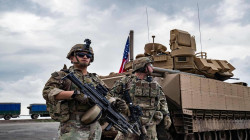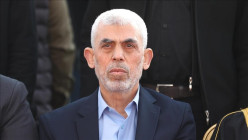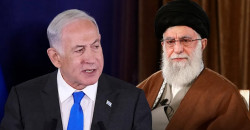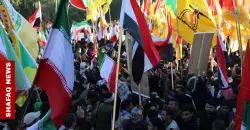JP: Drone attacks on US in Syria are designed to harass America into leaving

Shafaq News/ The US military says it downed a drone near its Tanf garrison in Syria. The garrison has been a lonely desert outpost for the Americans for several years. Established to help train Syrian rebels, it was part of the anti-ISIS mission. However, it was cut off from other US forces operating in eastern Syria when the Syrian regime and Iranian-backed militias retook areas along the Syria-Iraq border in 2017 and 2018. That meant it became surrounded by the Syrian regime with a handful of US forces in the garrison near the Jordanian and Iraqi border.
This area is strategic and the little outpost has an exclusion zone around it, a larger semi-circle, that extends influence and ostensibly also makes it more difficult for Iran to control the territory from Albukamal to the Golan. The US does not say it is in Syria to keep the Iranians out. Its role is to work “by, with and through” the local partner forces.
The US mission is tailored to “fight ISIS.” However, under the Trump administration, US officials said they wanted Iran to leave and that America would stay in Syria until Iran was gone. They shifted rhetoric a bit but said they backed Israeli airstrikes against Iranian trafficking of arms to Hezbollah.
The new US administration may have a different view. There are talks in Vienna toward a new deal with Iran. It is unknown what may happen with Tanf. The soldiers there have reportedly tested a variety of counter-drone technologies. It is well known that CENTCOM head Gen.l Kenneth McKenzie has been warning about drone threats for years.
The threat is rapidly increasing. Iran stationed drones at the T-4 base in Syria in February 2018 and used one to fly into Israeli airspace. It has expanded the drone program, bringing in operators to its Kashan base and sending drone technology to Yemen, Gaza and Iraq, as well as Syria. In May of this year, Tehran brazenly sent a drone from Iraq over Syria to fly into Israeli airspace; Israel shot it down.
Now reports indicate that the drone threat is growing. Iran uses kamikaze drones and also has surveillance drones. It gives them to local militias as well. In the fall of 2018, for instance, a Hezbollah killer drone team went to an area near the Golan to threaten Israel. They were subsequently neutralized in an airstrike.
NOW IRAN is turning its attention to the Americans. This is not entirely new. In 2017 the US downed “pro-regime” drones in Syria near Tanf. On October 20, 2021, a number of drones were used to attack Tanf. Reports in US media said that Iran had carried this out as a “response” to Israeli airstrikes in Syria. Around five drones were used. The US apparently had some advanced warning. Now reports say that the drones attacked again on the night of December 15-16.
Capt. Bill Urban, the spokesman for US Central Command, said two drones entered the exclusion zone around the garrison. “As one of the UAS [unmanned aircraft systems] continued its course deeper into the Al Tanf Deconfliction Zone, it was assessed as demonstrating hostile intent and was shot down,” Urban said. The drones were monitored, apparently by radar.
We also know another key detail here. Reports at NBC say “the second small drone turned and left the area. It is not known if either drone carried any explosives.”
If the drone turned around, this indicates that the operators knew their other drone had been downed. This is evidence of control, rather than pre-programmed drones striking a target. Iran used a number of drones and cruise missiles to hit Saudi’s Abqaiq facility in September 2019. This was a major wake-up call for the region about Iran’s capabilities.
Israel has said, in the wake of that incident, that Iron Dome can take down drones. The Israeli missile defense system shot down a Hamas drone for the first time publicly in the May war. Patriot missiles and missiles fired from F-16s and helicopters can also be used to shoot down drones, which usually fly slowly.
However, the larger point here is that the attack in 2019 was a one-way Iran kamikaze drone mission. Now the Islamic Republic's drones may be more sophisticated and have longer-range communications – and Tehran may be planning more complex attacks.
What is the message? Iran or its friends and allies – such as the Syrian regime and pro-Iran militias that are festooned around Iraq and Syria – want the US to leave Tanf. They want the US out of Iraq and Syria in general. Washington has said it has ended its combat role in Iraq. But McKenzie said this week that US forces will remain in Iraq.
IT IS UNKNOWN what the US wants to do in eastern Syria. It may be reviewing the Syria situation. Iran would like to push the Americans out with harassment and a thousand little paper cuts, using drones and other means. The Syrian regime, Russia, Turkey and others want the US to leave Syria as well. This would mean abandoning the Syrian people, who have counted on the Americans, and letting authoritarian regimes rush into the vacuum.
The increasing role of drones everywhere in the world is now widely known. Ken Dilanian covered “killer drones” at NBC recently with a look at the Switchblade 300. Adam Kredo at the online Washington Free Beacon wrote this week about Iranian “drone armies” and a “surge of attacks” on US forces in the region.
A group of Republican lawmakers is demanding answers from the Biden administration about how it is working to counter these threats. The lawmakers – Reps. Bryan Steil (R–Wisconsin), Joe Wilson (R–South Carolina), Brian Babin (R–Texas), and Andrew Clyde (R–Georgia) – wrote a letter on Tuesday to the State Department demanding answers for why these strikes have gone unpunished. "These include a strike against an alleged CIA hangar in Erbil, Iraq, in April and the Baghdad airport this June.”
The US and Israel are practicing with lasers to confront drone threats, either in the air or at sea. Russia has been showcasing its new Okhotnik drone while Tyler Rogoway recently covered two new secret drone programs that may be part of the new US Air Force budget. Israeli counter-drone technology also helped protect the pope, according to a recent article at The Jerusalem Post.
The drone threat to US forces in Syria, and America's successful interceptions of them, is just one part of the drone war. However, when it comes to strategy, the overall goal of the Iran drone campaign is to spread threats from the Gulf of Oman to Syria, be able to target US forces at will and to strike commercial targets like ships. Iran used drones to hit a commercial tanker in July, killing two people, and has not been held accountable for these strikes.
(JP)





